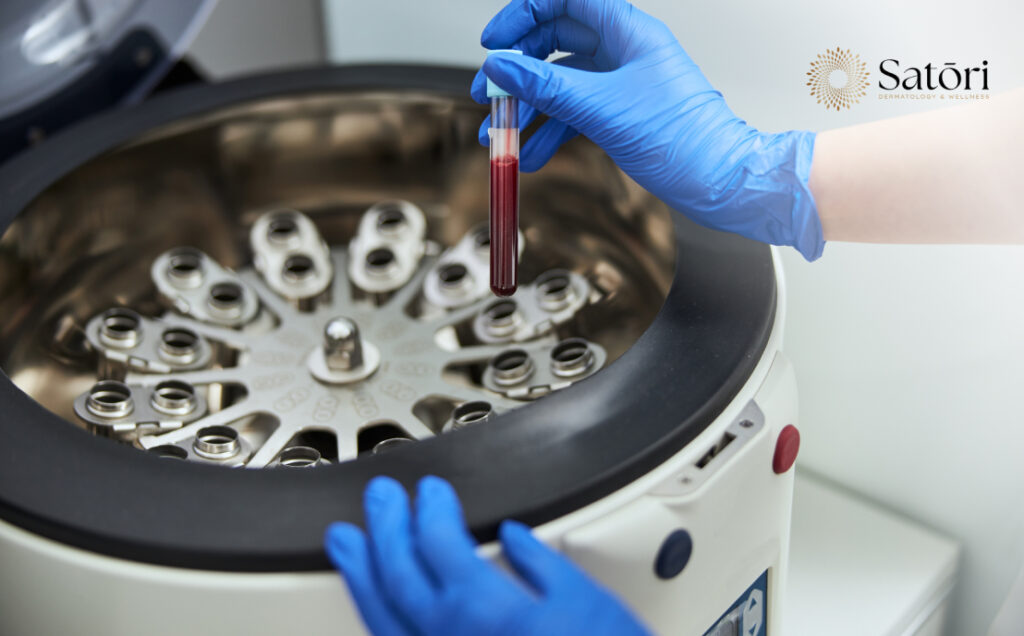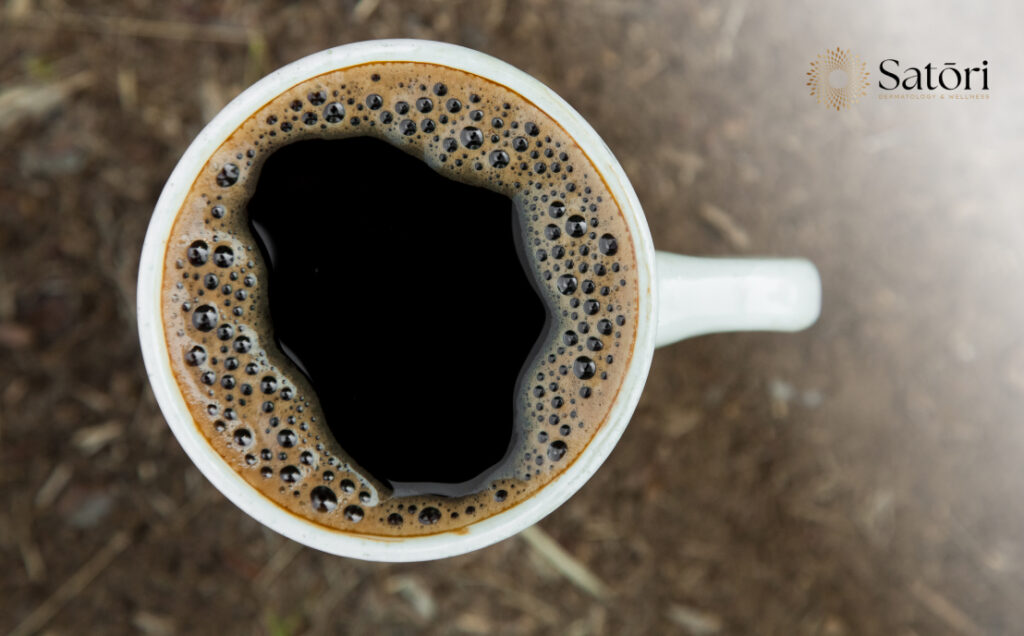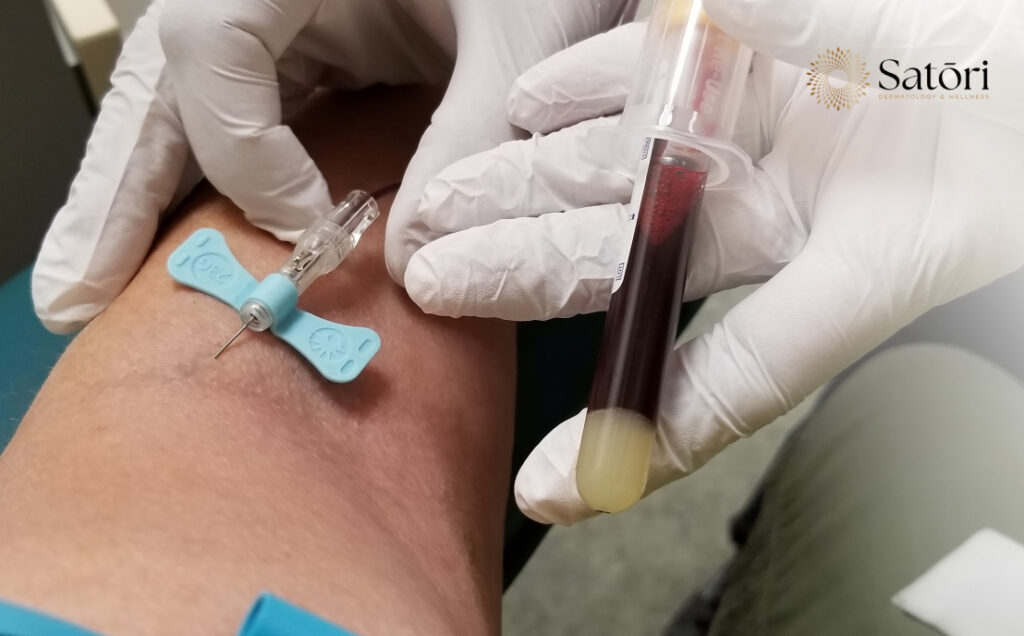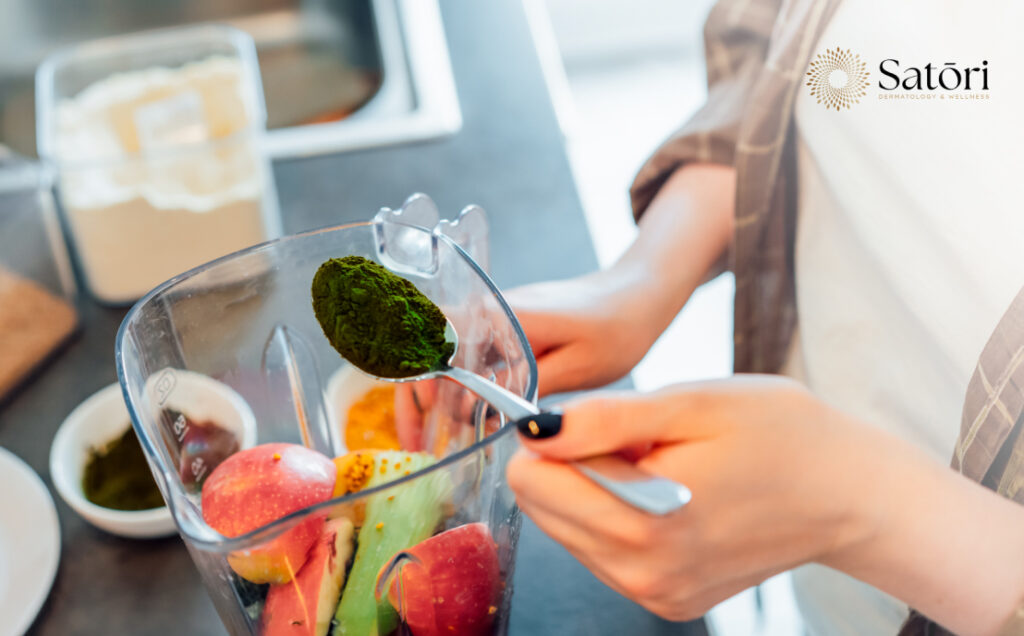That morning coffee might be sabotaging your expensive PRP treatment without you realizing it. While most clinics provide general aftercare instructions, few explain the critical science behind why caffeine restriction matters for optimal results. Understanding this hidden connection can be the difference between mediocre outcomes and the transformative results you’re investing in.

What PRP Is and How It Works
Platelet-rich plasma (PRP) therapy represents one of modern dermatology’s most innovative approaches to skin rejuvenation and healing. At its core, PRP is a concentration of platelets—tiny blood cells crucial for clotting and tissue repair—derived from your own blood.
The process begins with a simple blood draw, similar to a routine lab test. This blood is then placed in a centrifuge, which spins at high speeds to separate blood components based on density. The result? A golden-yellow serum containing platelets at concentrations 3-5 times higher than normal blood levels.
When injected into target areas, this platelet concentrate immediately goes to work. Unlike synthetic fillers or foreign substances, PRP utilizes your body’s own healing mechanisms, making it both natural and compatible with your unique biology.
PRP is commonly used in

Why Caffeine is a Silent Saboteur
Many patients carefully follow aftercare instructions about skincare products and sun exposure after PRP treatment yet overlook how caffeine consumption can affect their results.
How Caffeine Affects Blood Vessels (Vasoconstriction)
Caffeine temporarily constricts blood vessels, which may impact PRP therapy. This vasoconstriction reduces oxygen delivery to healing tissues and limits the distribution of injected platelets throughout the treatment area. Some research suggests that caffeine consumption reduces blood flow in tissues, but the extent to which this affects PRP healing remains inconclusive. Individual responses vary, and while reducing caffeine intake might help maintain optimal circulation, direct clinical evidence specific to PRP outcomes is still developing.
Impact on Platelet Function and Aggregation
Caffeine interacts with adenosine receptors, which play a role in platelet function. However, research suggests that caffeine alone does not significantly impair platelet aggregation. Studies indicate that compounds found in coffee—rather than caffeine itself—are responsible for inhibiting platelet aggregation. While avoiding coffee may be beneficial in maintaining platelet efficiency, caffeine in other forms (like tea or energy drinks) might not have the same effect. More research is needed to determine whether caffeine meaningfully affects platelet behavior post-PRP.
Effects on Inflammation Pathways
Controlled inflammation is essential after PRP therapy to attract healing cells and signal tissue regeneration. Caffeine influences inflammation in complex ways. Some studies suggest it has anti-inflammatory properties, potentially downregulating inflammatory signals. However, other research indicates that caffeine could interfere with cell proliferation and migration, processes critical for wound healing. While caffeine’s impact on PRP-induced inflammation is not fully understood, patients seeking optimal results may benefit from temporary caffeine reduction to allow natural healing signals to proceed without interference.

The Critical 72-Hour Window
PRP activation follows a precise timeline after injection. Platelets immediately begin adhering to damaged tissue, with the most intensive growth factor release occurring between 12-24 hours post-treatment. By 48 hours, these growth factors have recruited stem cells to the area, which are actively proliferating. The process continues through 72 hours as platelets gradually release their reserves to sustain healing.
This 72-hour period plays a vital role in determining PRP outcomes. During this time, inflammation signals healing, blood vessels need to maintain proper dilation to deliver nutrients, and platelets must fully activate to signal stem cells. Disruptions during this critical period may influence long-term results, though direct research on caffeine’s impact in this window remains inconclusive.
Some clinical evidence suggests that patients who strictly follow post-procedure protocols—including caffeine avoidance—experience better collagen induction and tissue remodeling in the weeks following PRP. While caffeine’s exact role in this process is still being studied, erring on the side of caution by avoiding it may be beneficial for maximizing PRP results.

Alternative Energy Boosters During Recovery
PRP recovery doesn’t mean you must endure fatigue and brain fog. These caffeine-free strategies can maintain your energy while optimizing healing outcomes.
Natural caffeine-free alternatives provide gentle energy without compromising blood flow. Try adaptogenic herbs like Rhodiola rosea or eleuthero, which support adrenal function without vasoconstriction. B-vitamin complexes enhance cellular energy production, particularly B12, which supports red blood cell formation. Protein-rich snacks containing tyrosine (eggs, chicken, avocados) boost dopamine production naturally, improving mental clarity without stimulants.
Proper hydration directly impacts energy levels during recovery. Even mild dehydration (2% fluid loss) can reduce cognitive performance and increase fatigue. Aim for at least 80-100 ounces of water daily following PRP treatment. Infuse water with electrolytes by adding a pinch of high-quality salt or consuming coconut water. Antioxidant-rich beverages like hibiscus tea or tart cherry juice support healing while providing refreshment.
Sleep quality becomes even more crucial during recovery. The growth hormone released during deep sleep accelerates tissue repair and complements PRP’s regenerative effects. Maintain a consistent sleep schedule even if taking time off work. Create optimal sleep conditions: cool room temperature (65-68°F), complete darkness, and minimal EMF exposure. A 20-minute afternoon power nap can restore alertness without interfering with nighttime sleep.
Embracing the Caffeine-Free Path to Optimal PRP Results
Your commitment to temporarily avoiding caffeine after PRP therapy may help optimize your treatment success. While the direct impact of caffeine on PRP outcomes is not fully understood, its potential effects on blood flow, platelet function, and inflammation make it worth considering.
By respecting the critical 72-hour window, choosing effective energy alternatives, and supporting your body’s natural healing process, you’re positioning yourself for optimal rejuvenation. Even small, temporary lifestyle adjustments can contribute to better collagen production, enhanced healing, and ultimately more dramatic visual results that last longer—making those few caffeine-free days a worthwhile investment in your skin’s future.

